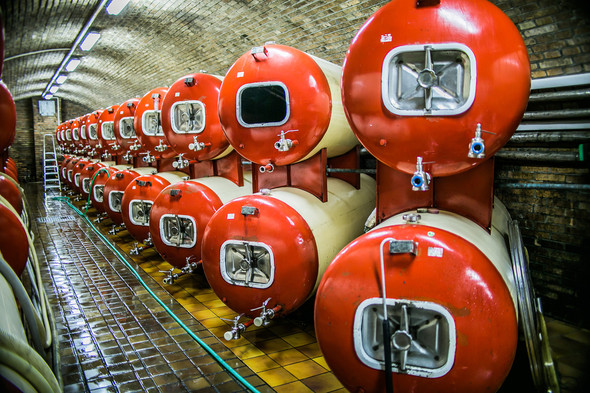The property of Mojmírovce is situated nearly the upper border of the world’s viticulture, in the wine region of Nitra, Slovakia. Actually, the winery’s 130 acres of vine creates one single land, as it is split by just a path. As for variety selection, they preferably deal with Green Veltliner, Blue Frankish, Welschriesling, Chardonnay, Pinot Gris, Cabernet Sauvignon, Merlot, St. Laurent and Lemberger, but one can also find Bacchus which is a very rare sort bred in Germany, and Alibernet which is originally from Ukraine but very popular throughout Slovakia.
The plantations are 150-170 metres above sea level. There is brown forest soil, average temperature is 9.8 degrees. The areas of Mojmírovce have a southern or south-western aspect, from where they make around 100-130 thousand bottles of wine.
The parish where Mojmirovce can also be found, is an ancient vinicultural settlement. The first written relic about its enological and vintner activities comes from 1156, which is part of a pontifical document from Esztergom. The past of Mojmírovce looks back to 1951, when the company was a classic collective farm or sovkhoz (this Communist invention can be perfectly understood by just those who also lived in such a country at that time). Although collective farms were also cancelled in Slovakia, we can still see this characteristic feature in the main profile of Mojmirovce. They turned from open wine to quality production in 2003, so they founded their fame in the country with this decision. Mojmirovce wines even do not cross the borders of Slovakia, but they also cannot be found at the local big supermarkets. The above-mentioned more than hundred thousand bottles are consumed from the shelves of local wine shops, wine list of restaurants, or the local store of the winery, while this commercial conception stays stable because of the owners’ way of thinking. The owners… who are about eighty people as it is a collective farm-like company.
If we think of Mojmírovce is struggling to sell its 100-130 thousand commercial bottles while having 200000 bottles of total capacity, we make a mistake. There are some occasions when they are left without any products for half a year, that’s why they are continuously working on gradually developing the technologies (both oxidative and reductive) within the winery. Most of the refrigerated-and-heated fermentation tanks are from 1989. As for the barrel stock, they are French products, but it’s interesting to use local timber, of course oak for all these.
They do not snatch bottling, as they state: “fast wine” will not be made by them. Of course Bacchus, which has an early ripe, can be tasted at the cellar in December after autumn harvests, but talking about the actual vintage, we have to wait at least a year for Mojmírovce’s really top quality items like Rhine Riesling and Traminer.






